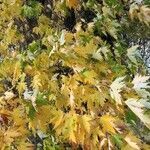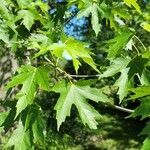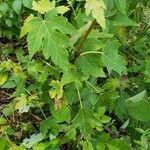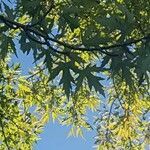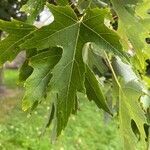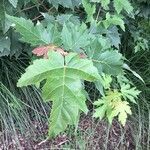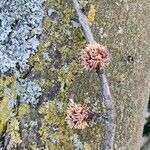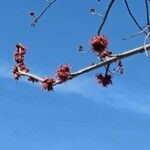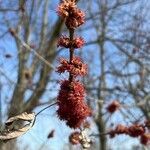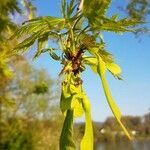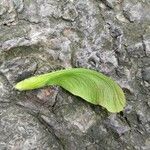A deciduous tree 30 m high and 15 m across. The trunk is 100 cm across. In open locations it forms branches low down to produce several trunks. It has a broad crown. The leaves are 15-20 cm long and have 5-7 lobes. They are widest at the base. They have coarse, sharp, irregular teeth. The central lobe narrows towards the centre of the leaf. The upper surface is light green and underneath it is silvery white. Leaves turn pale yellow or brown in autumn. The flowers are small and greenish-yellow. They are on short stalks. They appear before the leaves. The fruit have wings. These are 40-70 mm long and spread widely. The seedcase is ribbed. Often only one of the two seeds develop.
Deciduous tree 8–20 (–35) m high. Bark grey to brownish, becoming furrowed and scaly. Leaves: lamina palmately 5-lobed, 8–17 cm wide, cordate to truncate at base, the 5 deep lobes with widely separated teeth towards the tip, the central 3 lobes each further divided into 3, the lamina silvery or glaucous beneath, colouring mostly yellow (to orange) in autumn; petiole slender, 5–12 cm long. Flowers yellow or greenish yellow, appearing well before the leaves. Samaras 3–5 cm long with widely spread wings.
